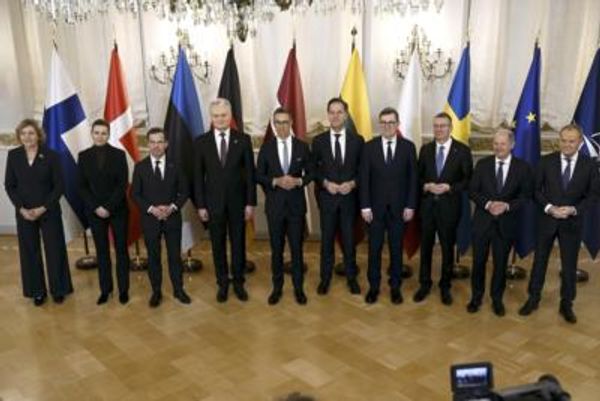Reproducing a painting seems easy to us now but, back in the day, the skill was marvelled at.
First created as a way to disseminate art to wider audiences, printing soon became an art in its own right, with many of the best known artists of across centuries turning to it for its variety and ease of reproduction.
Printmaking takes many forms. Woodcutting, the earliest technique, is done by painting designs onto a plank of wood for transfer onto the page; etching involves carving into a metal plate; lithography uses oil to repel ink into shapes; and screen-printing uses a fabric stencil and squeegee.
The Dulwich Picture Gallery is shining a light on modern british printmaking with their new exhibition Cutting Edge, which opens today.
To mark the exhibition, we’re celebrating some of the artists who have contributed to the practice of printmaking through the years.
Andy Warhol

Andy Warhol helped to make screen-printing known as an art form in the 1960s. One of his first silkscreened images was his Marilyn print, created shortly after her death. He based it on a photograph from her 1953 film Niagara, and went on to publish a series on the moviestar. Printing became a staple in his artistic process, using it for a collection of Chairman Mao portraits and repeated images of soup cans, all now instantly recognisable as undeniably Warhol.
Pablo Picasso

Picasso is less well-known for his printmaking but created numerous lithographs, etchings, linocuts and woodcuts throughout his career, constantly experimenting. He made the first of these in 1905, but it was in the post-World War II years that he made most of these prints. He collaborated with a number of master printmakers and was constantly learning new techniques throughout his life. Fernand Mourlot, founder of Mourlot Studios in Paris which created prints for Matisse, Miro and Bonnard, helped him to discover lithography. Even later in life, Picasso was still learning. He took up linocut printing aged 78, using it to make his own exhibition posters.
Henri Matisse

Recognised particularly as a sculptor and painter, Matisse was always trying out new things. He saw printmaking as an extension of drawing and used its technical process as a way to demonstrate how his artistic vision evolved throughout a piece of work. From a practical point of view, he also saw it as a way to get his work into the hands of more collectors and installed a printing press in his own studio. Matisse’s book Jazz, published in 1947, is a collection of prints and the artist’s musings, around themes of theatre and circus. The prints themselves weren’t created by Matisse, as he was bedbound at the time after surgery for abdominal cancer. Unable to move much, he cut forms from coloured paper and his assistants would prepare them for printing.
Rembrandt

Dutch master Rembrandt Harmensz van Rijn took up printmaking in the 1620s. His self-portraits are some of the most recognisable etchings to date. Unlike many other artists, Rembrandt saw printmaking as its own artistic medium, rather than a way to reproduce his paintings. He created around 300 of these throughout his career, often going back to edit the plates to make tiny changes to the prints. His house in Amsterdam, now a museum, boasts an almost complete collection of his etchings and still has his functioning workshop, which gives an insight into the exact processes and materials he used.
Paul Gaugain

The French post-Impressionist tried a number of printing techniques in his time, and even created his own. It didn’t matter to him if he was inexperienced – his first foray into lithography saw him print onto sheets of garish yellow poster paper (which no one else was doing at the time). He kept experimenting: towards the end of his life, he began to create oil transfer drawings, a hybrid of drawing and printmaking – another practice he originated. This allowed him to create depth and texture through printing multiple layers on the same sheet.
Salvador Dalí

Dalí broke many boundaries in his art, both in terms of process and what came out on canvas. It’s no surprise then that his printmaking was something different too. He is said to have filled rhinoceros horns with ink-soaked bread and crushed it onto stone, which was then put through a lithographic press. He also originated “bulletism”: firing ink or filled snail shells at the stone. Dalí did take advantage of the commercial benefits of printmaking, scratching a quick image into a metal plate to be printed. He once said of this: “Each morning after breakfast I like to start the day by earning twenty thousand dollars.” He shot himself in the foot later on, when he is said to have pre-signed a few thousand blank print-ready sheets in an effort to increase sales, leading to a spate of forgeries.
JMW Turner

In Turner’s time (1775-1851), most people would only be able to view his paintings as reproductive prints created after works. We know Turner as an artist adept in expressive colours, but this was not something that translated well to print. Instead, the focus was on the lines of his paintings, which would produce prints in muted tones but no less expressive. More than 850 of these were made over his lifetime, usually by a chosen trusted group of engravers. But sometimes he would create the etchings himself, either in their entirety of with the help of a professional graver to fill in the detail. He was a busy man after all.
Cutting Edge: Modernist British Printmaking runs at Dulwich Picture Gallery until September 8, dulwichpicturegallery.org.uk







